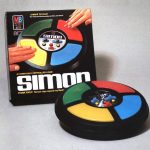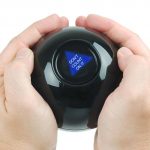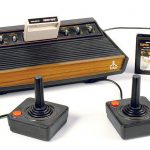Children in the 1980s had a multitude of creative ways to keep entertained. It was the era when electronic toys were beginning to rise to fame, and the era ushered in some of the most iconic toys from our childhood.
One of the famous toymakers during that time was Milton Bradley (now Hasbro), and one of their most popular kids toys then was the “Simon Game” or just “Simon”.
The Simon Game was a commercial success that still exists today. But what was “Simon” and why was the game so popular during the 1980s?
Simon Game In The 80s
This wonderful toy’s innovative inventors were Ralph H. Baer and Howard J. Morrison in 1978. The original “Simon Game” had a circular shape structure and had four buttons in different colors.
The buttons of Simon were green, yellow, blue, and red. Each of them had distinct sounds when you pushed them as well.
It was a game that caught on like wildfire after its initial release, and it continued to be a mainstay really throughout the 80s and into the 90s as well.
To start the game, the player had to press the green button. The toy then would begin to play a series of musical notes. The player then needed to recall the note sequence after Simon was finished by pushing the correct buttons in the exact order.
As long as the repetition was a success, the player would advance to a higher level with even longer musical sequences. However if there was a wrong answer, the green light would beep and the game was over. It was a pretty straightforward game that was easy to learn, and the children who played Simon loved it.
Inspiration For The Simon Game
This original inspiration for Simon was an Atari Arcade game called “Touch Me”. Baer and Morrison saw it at a trade show and immediately thought there was something to it.
“Touch Me” had four different notes, and the player had to repeat them to win. However the weakness of the arcade game was the sound it created was unpleasant. It made Baer take careful consideration in choosing the long notes that would eventually become synonymous with the “Simon Game”.
Another inspiration was the favorite kids game “Simon Says”. In this game, players needed to follow what “Simon Says”. So like in the “Simon Game” the challengers must follow the notes it plays. Failing to do so means losing the game.
Simon Says was a popular kids game played by millions of children across the world at the time, thus the creators of the “Simon Game” knew that there was a good potential for the success of their product.
Why The Simon Game Was Popular In The 80s
The Milton Bradley company, now called Hasbro, invested a lot in promoting the “Simon Game”. In fact a midnight release party was held in New York City dedicated to it, and the location was no less than the legendary Studio 54.
The “Simon Game” had a celebrity-like fanfare. The hype paid off, and the public loved this game. The peak of its sales was during the 1980s, but even today it is still being distributed and sold both in stores and online platforms.
Another reason for its popularity was the challenge it gave to its players. It was a memory game that required good listening and vision. Compared to regular board games, where winning was dependent on chance, this game’s victory was by the player’s skill and effort.
Another great thing about the game was that people of all ages could play it. Simon was also portable and easy to bring on family trips or school camps, further adding to its popularity.
The “Simon Game” was nothing short of legendary, and till this day kids who grew up during the 1980s will at least have seen if not played this iconic toy themselves. It remains one of the nostalgic toys of the era, and if you were lucky enough to own one, you know that it was a blast to play and a memory you look back on fondly.







